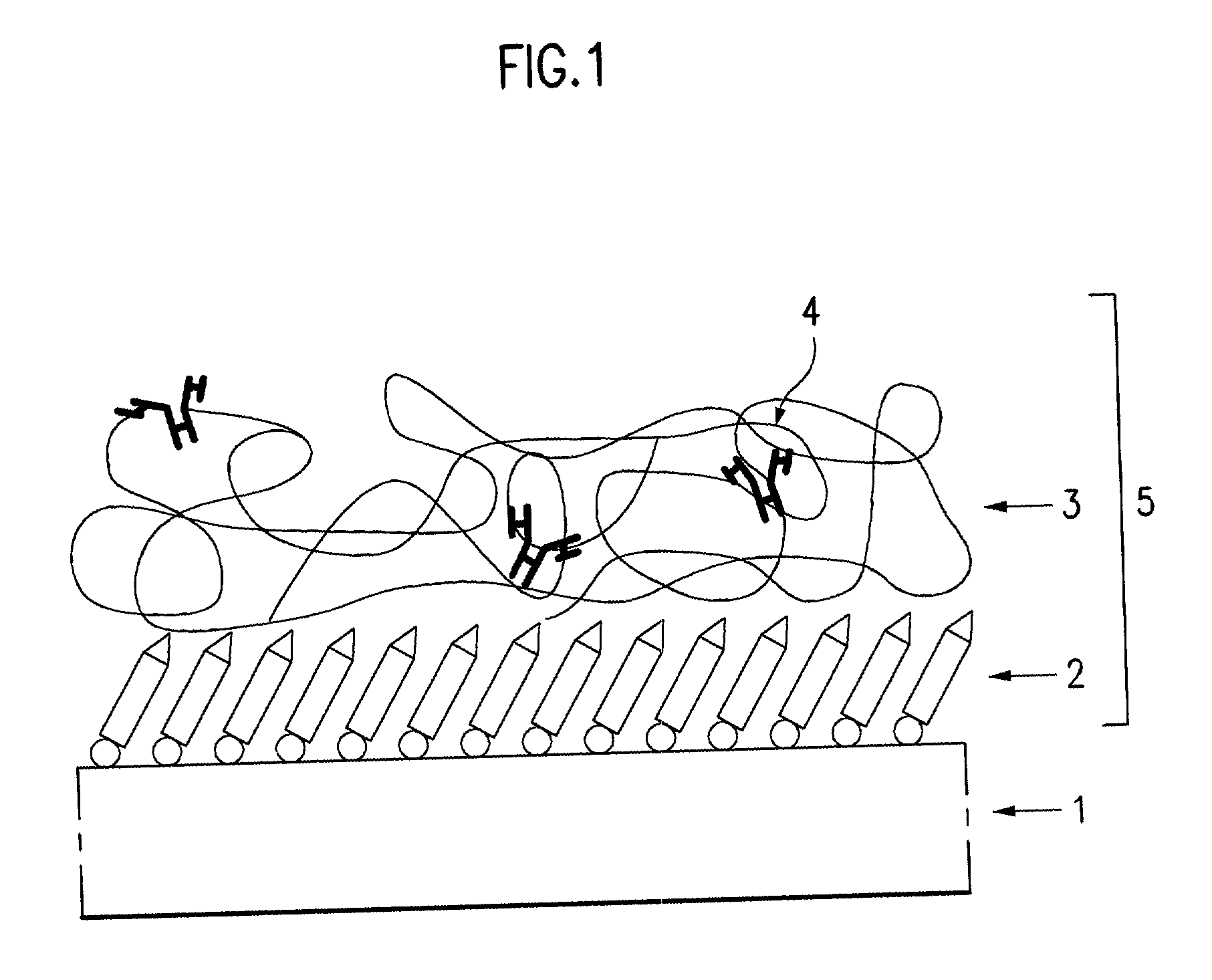Interface sensing membrane in bioelectronic device and method for forming the same
a bioelectronic device and sensing membrane technology, applied in the field of interface sensing membrane in a bioelectronic device and a, can solve the problems of not solving the problem, unable to maintain the immobilization of the bioelement, and the loss of the molecular recognition function of the bioelemen
- Summary
- Abstract
- Description
- Claims
- Application Information
AI Technical Summary
Problems solved by technology
Method used
Image
Examples
embodiment 2
[0042] DNA interface, interaction between a DNA and a complementary DNA.
[0043] (1) Formation of a molecular adhesive layer on a gold thin film A process for forming the molecular adhesive layer on the gold thin film using a heterobifunctional reagent will be explained. A 3-mercaptopropionic acid(MPA) used as the heterobifunctional reagent has a thiol at one end and a carboxyl functional group at the other end. 1 mM of MPA solution is prepared using pure ethanol after deaeration by sonication. After 10 ml of the heterobifunctional reagent solution is filled in a glass scintillation vial, a specimen of the gold thin film is placed therein. Then, while being kept air tight, the vial is left standstill for more than 18 hours, to cause chemisorption reaction between the MPA solution and the gold thin film to form a molecular adhesive layer of a molecular monolayer. A surface of the molecular adhesive layer is washed with ethanol and water in succession, dried with nitrogen gas, and conse...
embodiment 3
[0048] (1) Formation of a molecular adhesive layer on a silicon chip
[0049] A process for forming a molecular monolayer processed with a heterobifunctional reagent as the molecular adhesive layer on the silicon chip will be explained. A (3-aminopropyl) trimethoxysilane(APS) used as the heterobifunctional reagent has a silane functional group at one end and an amine functional group at the other end. A silicon wafer is cleaned and cut into 1.times.1 cm.sup.2 size. A surface of the cut silicon chip is washed with anhydrous toluene containing 2% APS within a glove box kept air tight by an inert gas, such as argon, took out of the glove box, and dried by blowing nitrogen thereto. After the molecular monolayer is formed, the next step of formation of the hydrophilic three dimensional microstructured layer is started without delay.
[0050] (2) Formation of three dimensional micro structured layer on the molecular adhesive layer
[0051] The hydrophilic three dimensional microstructured layer ca...
PUM
| Property | Measurement | Unit |
|---|---|---|
| thickness | aaaaa | aaaaa |
| resistance | aaaaa | aaaaa |
| pH | aaaaa | aaaaa |
Abstract
Description
Claims
Application Information
 Login to View More
Login to View More - R&D
- Intellectual Property
- Life Sciences
- Materials
- Tech Scout
- Unparalleled Data Quality
- Higher Quality Content
- 60% Fewer Hallucinations
Browse by: Latest US Patents, China's latest patents, Technical Efficacy Thesaurus, Application Domain, Technology Topic, Popular Technical Reports.
© 2025 PatSnap. All rights reserved.Legal|Privacy policy|Modern Slavery Act Transparency Statement|Sitemap|About US| Contact US: help@patsnap.com

